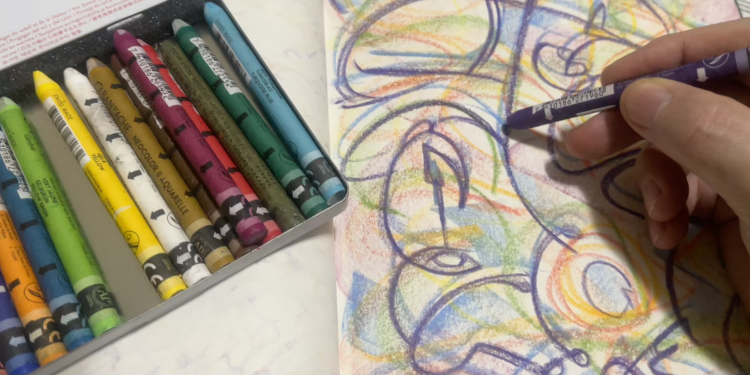Since it’s back-to-school time here in the US, I’m going to present a series of articles related to that in the next few weeks. Drawing is more than just a creative outlet—it’s a fundamental skill that plays a crucial role in the cognitive, emotional, and social development of individuals of all ages. From enhancing problem-solving abilities to fostering emotional expression, drawing education offers numerous benefits that extend far beyond the art studio.
Let’s explore why drawing education is so important and how it contributes to personal growth, creativity, and overall well-being. Plus, I’ll recommend some useful products to help get started on your drawing journey.
The Cognitive Benefits of Drawing Education
1. Enhances Problem-Solving Skills: Drawing requires a great deal of planning and problem-solving. When creating a drawing, an individual must think critically about composition, perspective, proportion, and how to translate a three-dimensional world onto a two-dimensional surface. This process encourages analytical thinking and helps develop spatial awareness.
2. Improves Fine Motor Skills: For young children, drawing is an excellent way to improve fine motor skills. The act of holding a pencil, making controlled movements, and creating shapes on paper helps build the hand-eye coordination and dexterity needed for writing and other precise tasks.
3. Boosts Memory and Concentration: Drawing requires focus and concentration, whether you’re sketching a quick doodle or working on a detailed piece of art. The need to recall visual details and recreate them on paper can also enhance memory, as the brain is engaged in actively remembering and processing information.
The Emotional and Social Benefits of Drawing Education
1. Encourages Emotional Expression: Art, including drawing, is a powerful tool for expressing emotions. For children and adults alike, drawing provides a safe space to explore and communicate feelings that might be difficult to express verbally. This emotional release can be therapeutic and contribute to better mental health.
2. Fosters Creativity and Imagination: Drawing is inherently creative. It allows individuals to bring their imagination to life, whether they’re drawing from observation or creating something entirely from their mind. This practice encourages thinking outside the box and can lead to innovative ideas and solutions in various aspects of life.
3. Builds Confidence and Self-Esteem: Completing a drawing, especially one that requires significant effort, can be incredibly rewarding. This sense of accomplishment boosts self-esteem and encourages individuals to take on new challenges, both in art and in other areas of life.
The Educational and Professional Benefits of Drawing Education
1. Supports Academic Achievement: Drawing can support academic learning by reinforcing concepts in subjects such as mathematics, science, and history. For example, drawing geometric shapes can enhance understanding of math concepts, while illustrating historical events can deepen comprehension of historical narratives.
2. Prepares for Careers in Creative Fields: For those interested in pursuing a career in the arts, architecture, design, or animation, drawing is a foundational skill. A strong drawing education provides the technical skills and creative confidence needed to succeed in these fields.
3. Enhances Visual Communication Skills: In today’s visually-oriented world, the ability to communicate ideas through images is more important than ever. Drawing helps individuals develop the skills needed to convey complex concepts visually, which is valuable in fields ranging from marketing to engineering.
How to Draw Cool Stuff: A Drawing Guide for Teachers and Students
The Artist’s Complete Guide to Figure Drawing
Visual Thinking: The Hidden Gifts of People Who Think in Pictures, Patterns, and Abstractions
Drawing education is much more than learning how to make art—it’s about developing essential cognitive, emotional, and social skills that enrich every aspect of life. Whether you’re nurturing a child’s creativity, supporting your personal growth, or preparing for a career in a creative field, the benefits of drawing are vast and profound.
To get started or enhance your drawing practice, consider these recommended products:
- Moleskine Art Sketchbook
- Prismacolor Premier Colored Pencils
- Strathmore 400 Series Drawing Paper
- How to Draw Cool Stuff: A Drawing Guide for Teachers and Students
- The Artist’s Complete Guide to Figure Drawing
- Visual Thinking: The Hidden Gifts of People Who Think in Pictures, Patterns, and Abstractions
Invest in drawing education and unlock a world of creativity, problem-solving, and personal growth. Whether you’re a beginner or an experienced artist, there’s always more to learn and explore through the art of drawing.

